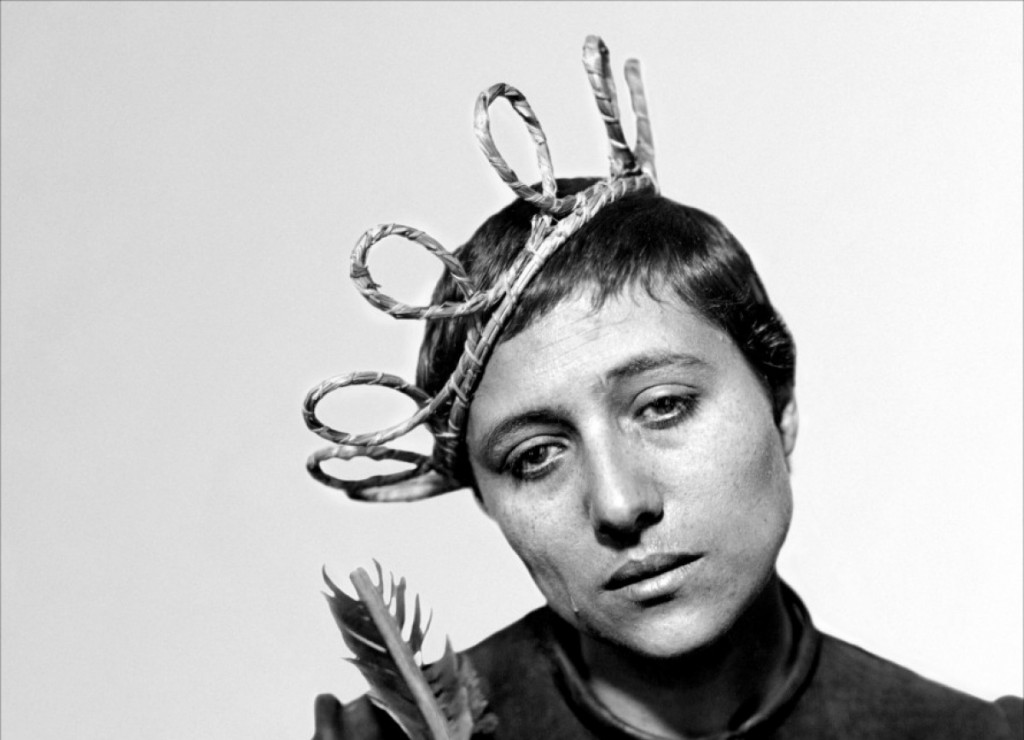La Passion de Jeanne D'arc (1928)
 “How can you believe that it is God who guides your steps when you see the abyss opening before your feet?”
“How can you believe that it is God who guides your steps when you see the abyss opening before your feet?”
It must be told that this is the best adaptation of Joan of Arc’s life that I’ve seen or read yet.
For being a Christian saint and “folk heroine” of France, the events of her life and death have produced various portrayals in movies, books and literature for centuries. Hell, she is even one of the historical figures in Bill and Ted’s Excellent Adventure. However, none of them quite match the depths and ranges of emotion shown in La Passion.
The film revolves a short time frame; it encompasses her trial, imprisonment and execution. Thus, similar to Broken Blossoms, it focuses less on expostition and more on Joan’s interaction with the judges and the progressing events. The main actress portraying Joan (Maria Falconetti) is a revelation. We see every emotion and thought flash across her face, even with little dialogue and no sound. This is best highlighted when she is threatened with being tortured and the turmoil of staying true to her connection with God vs. her safety is reflected in her body language. Falconetti plays Joan the entire movie with heartbreaking sadness as she reflects the injustice Joan suffered and the knowledge that her efforts are futile. In the end, we see Falconetti take a stoic expression when Joan is burned at the cross; this simple action speaks louder than any words she could have said.
The cinematography in this movie is absolutely wonderful; any praise I laud will not be enough. It is full of close-up shots, but they all add weight to the scenes and don’t feel like the director is forcing his style on you. They enhance the emotions and mood the characters bring, like adding drama when on Joan’s face and anger when the camera lingers on the Judge’s faces. The quick-cutting editing style, which differs largely from Broken Blossoms, provides further tension. My favorite part, however, is probably the “sharpness” of the film. Lots of silent films usually utilize a softer focus on the characters and scenery, almost adding a hazy presentation. While La Passion still had the limitations of the technology that make the film fuzzy, there is so much naturalistic detail in each shot. This stylistic choice introduces a higher level of realism and makes it that much easier to connect to the characters.
As evidenced in the title, passion is a central idea explored throughout the movie. It defines all the character’s motivation and draws out some irony in the way the passion is explored. The scenario revolves around all the characters believing in the spirit of God, but the Judges condemn Joan for being a “heretic” and lying about her visions of saints. In the end, the conflicting passions these people share ultimately spark the animosity between each other. This nuance, the emotions related and so much more are perfectly captured in La Passion. For this reason, it is one of my favorite films of recent memory.

I honestly love your blog. It gets me excited about films i’ve never heard of and even silent films which i thought would never be interesting to me, but you seem to really enjoy them so maybe i’ll give one a shot! I really like how you talk about the cinematography and how you get the ready excited about the film without giving to much away. I can tell that you really enjoy watching these movies and it makes reading your blog so enjoyable because i can tell that you really to like the movie and are excited about it.
I just lvoe this passion blog. And I think your design is really a terrific reflection of your subject. This is really nicely done!
I’m pleased to hear that you enjoyed your second film of your journey on your passion blog, and even more pleasantly surprised to hear that you found another additional silent film entertaining. Having seen other Joan of Arc films yourself, I will have to trust your opinion of this being one of the best, even one of your favorite films of “recent memory.” Isn’t it funny how the classics still continue to be our favorites, and current movies pail in comparison? I think a lot of that has to do with the quality of acting (solely on emotion and body language!) and the cinematography then as compared to now, like you mentioned. I can’t wait to read about a movie from the 30s next week!